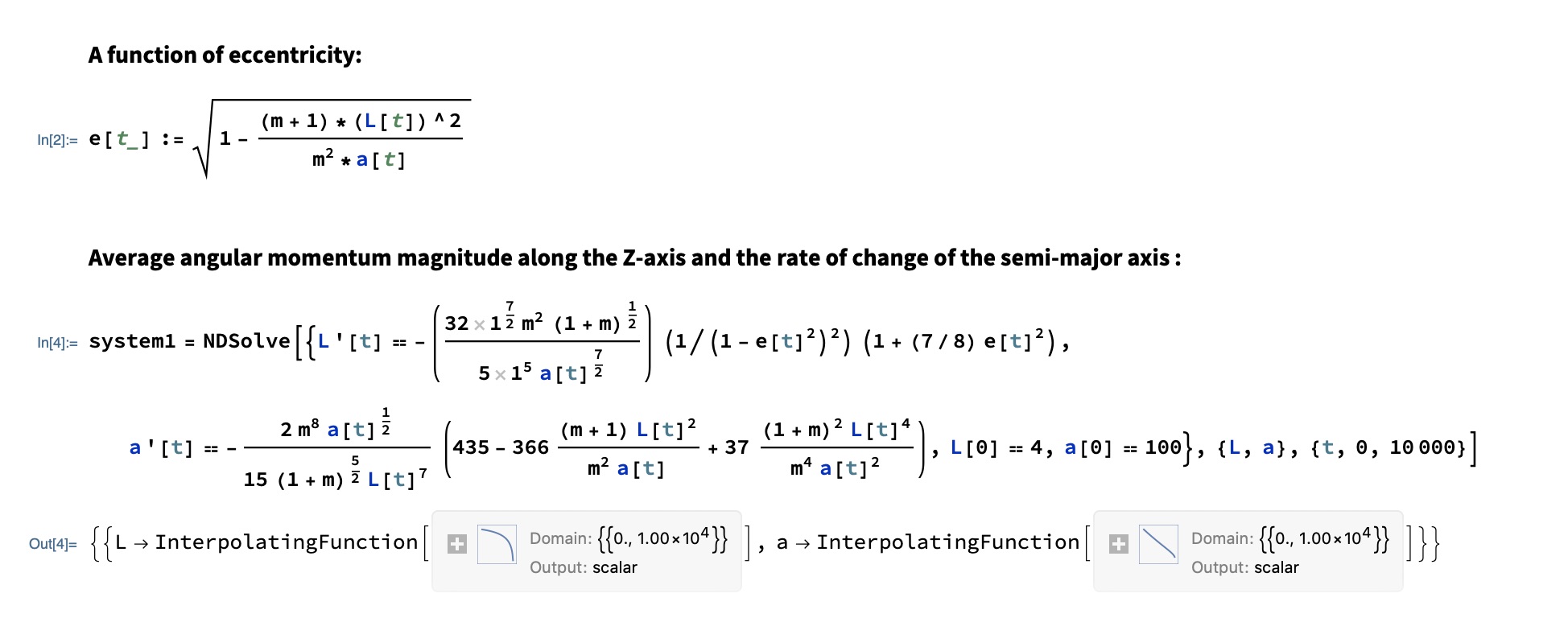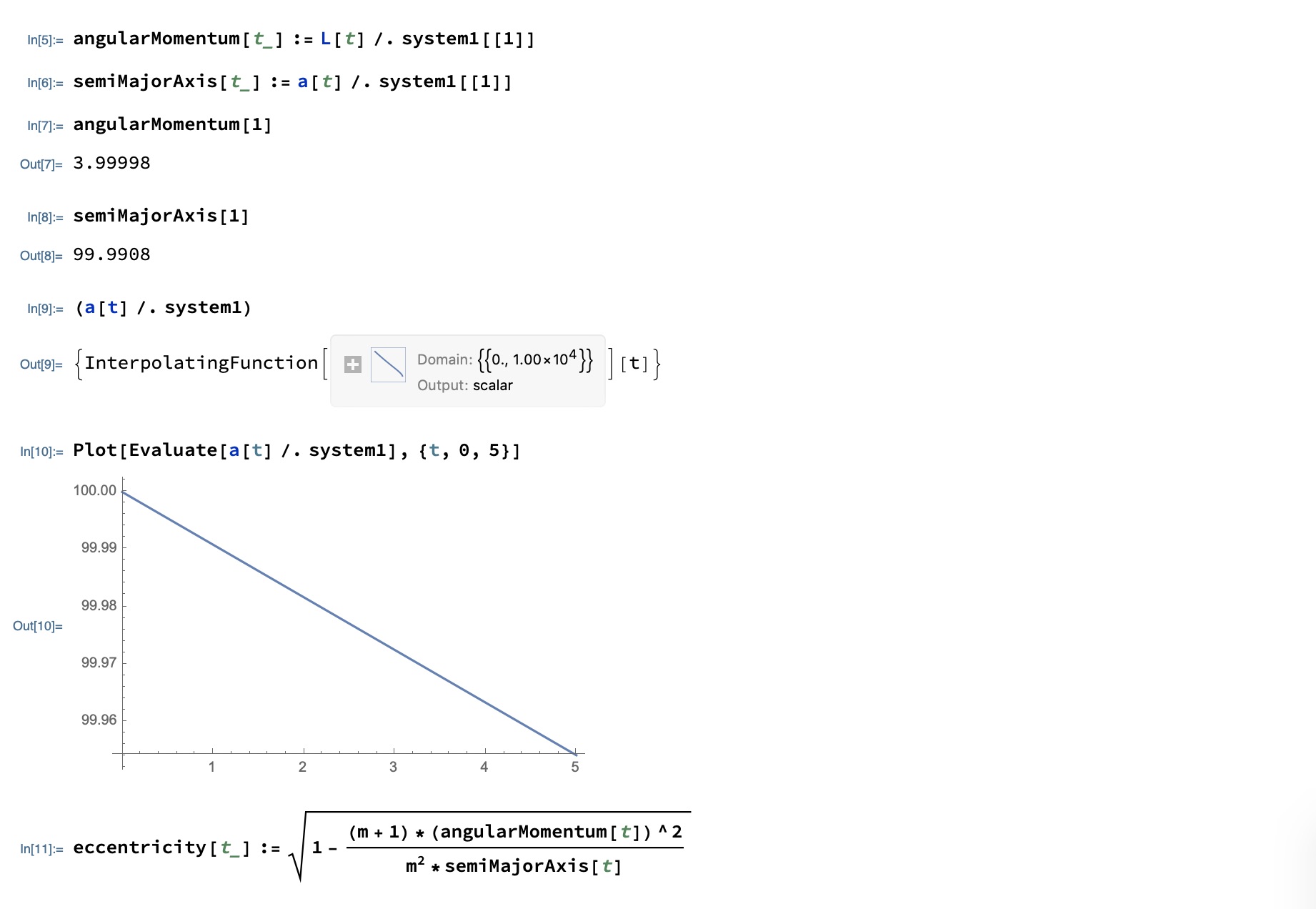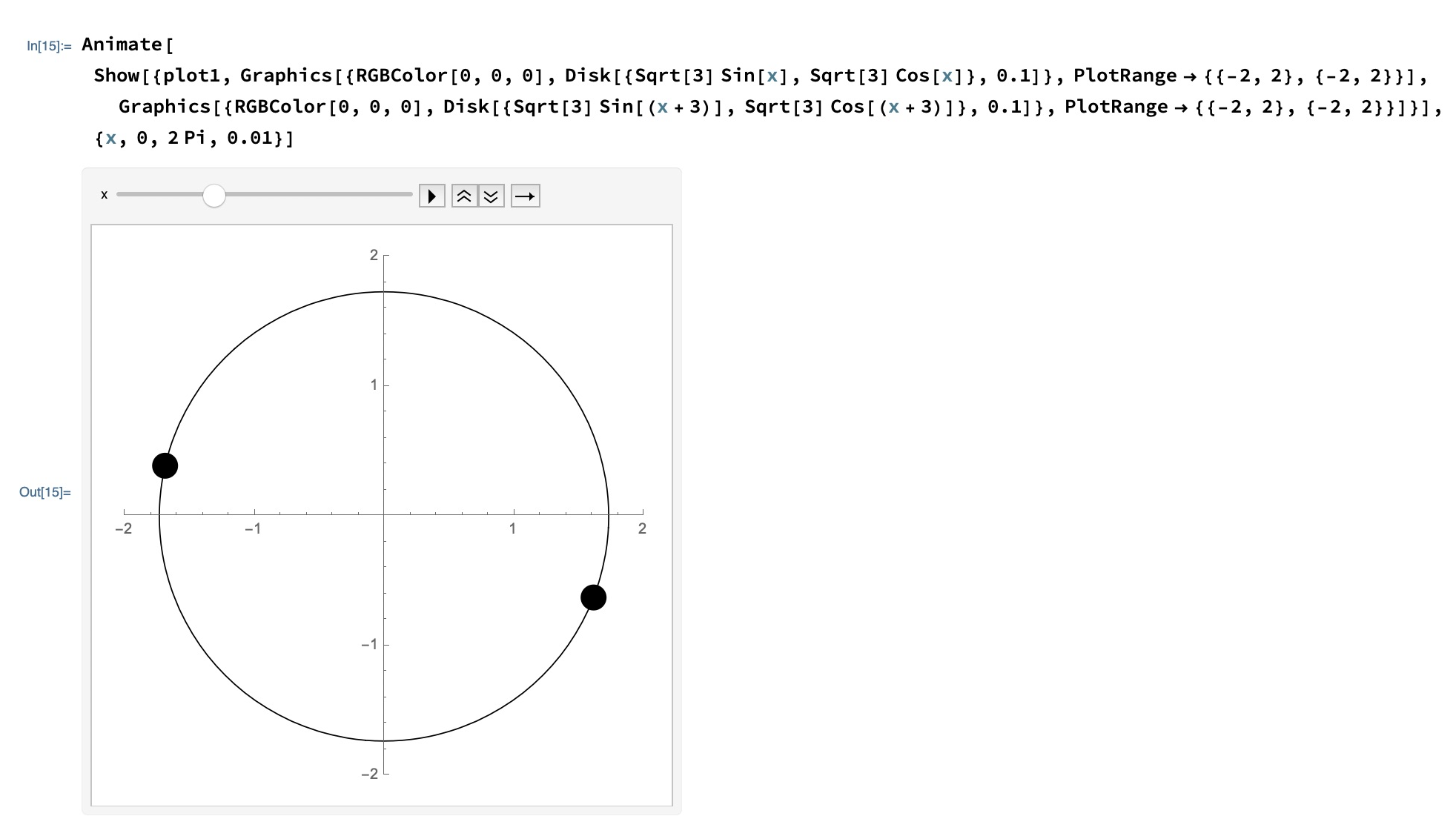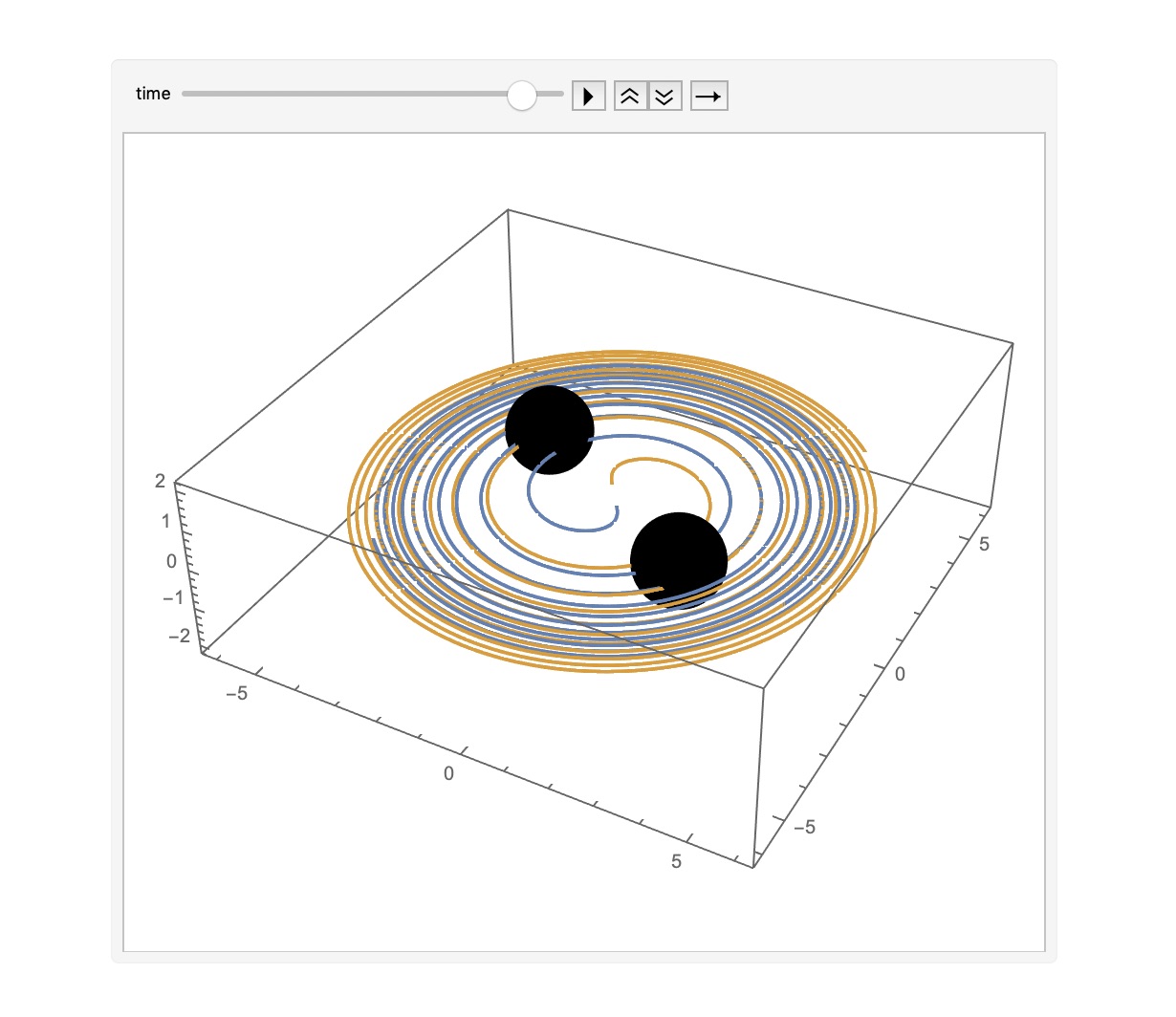Introduction

On September 14th, 2015, LIGO (the Laser Interferometer Gravitational-Wave Observatory), located in both Washington and Louisiana, detected a strange ping roughly 1.3 billion light years away from Earth. This ping was caused by gravitational waves as the result of a collision of two black holes which occurred just as Earths inner core began to form, only just reaching one billion years later. The purpose of this project was to visualize the relationship of a binary black hole system and the eventual collision between the two which marked a revolutionary event in the history of astrophysics.
Developing the Visualization
In order to develop the visualization, a set of differential equations had to be solved. Respectively, each equation modeled the average angular momentum magnitude along the Z-axis (seeing as the final result was to be three dimensional), the rate of change of the semi-major axis, the eccentricity, the radius, and the angular velocity about the center of inertia for the black holesthe result of which is shown here:



After evaluating the differential equations, graphs could be determined from which the points representing the black holes could be plotted, a place from which the final visualization could be created. Initially, two rotating points were created using an animation on a circular plot orbiting parallel to each other around the center of mass, also known as a barycenter:

Once this simple animation and the graphs were complete, the two were merged by a common function which allowed for the points plotted on the first animation to follow the path of the spiral graphs developed from various initial conditions provided alongside the differential equations. Initially, the animation was developed where one of the black holes remained stationary whilst the other one orbited around it following the path of the graph, but it was then changed so that both black holes would orbit around a barycenter, gradually getting closer and closer as the distance decreased but the acceleration increased, a relationship modeled by the proportionality ?r??t.

For the final, polished animation, a star-field was created which served as the background for the polished visualization (the color of space was changed to a medium blue in order to see the orbit of the black holes).

Conclusion
In conclusion, this demonstration was able to successfully visualize a binary black hole merger as discovered by LIGO, and as predicted by Albert Einstein's General Theory of Relativity in 1916. Through this visualization, we can view this incredible phenomenon and are given a glimpse as to what may occur if seen in real life. In the future, a second part of the project will be added to determine the distance of the gravitational wave detector from the black holes, and the time the signal reached the detector.
 Attachments:
Attachments: